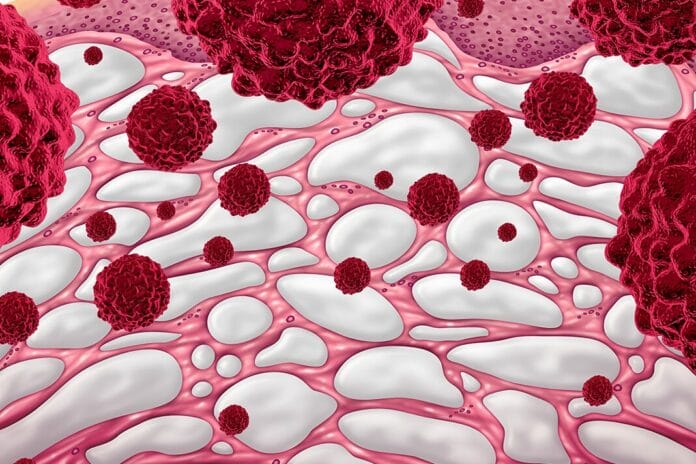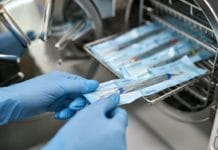During a recent commute to work, I listened to a particularly interesting episode of one of my favorite podcasts, “Radiolab,” which dove into a fairly recent and groundbreaking discovery in the human body called the interstitium. Until just a few years ago, doctors and scientists had missed an entire bodily organ of sorts, which was sitting right under our noses!
Since the understanding of this discovery is only beginning to grow, the research about its potential importance and effect on oral health is very limited. In order to better understand its possible significance in the dental realm and to make educated guesses as we advance, let’s dive into the basics of what we know so far.
What is the Interstitium?
The interstitium is a network of fluid-filled spaces that are found within and between tissues throughout the body. This entire bodily system had gone previously unnoticed because these fluid “pockets” were not previously visible when studying tissue under microscopes. When scientists typically view the cellular world through a microscope, the tissue is normally treated with chemicals that drain fluid and cause those “spaces” to collapse, creating a wrinkled appearance or lines in a solid wall.1
In 2015, two physicians at the Mount Sinai Beth Israel Medical Center in New York City, Dr. David Carr-Locke and Dr. Petros Benias, tried a new imaging technique that allowed them to examine living tissues on a microscopic level. They discovered that rather than the tissue having a wall with some visible cracks in it as previously seen, there was, instead, an “open, fluid-filled highway.”1
A beautiful and intricate world of interconnected fluid-filled spaces was identified, containing thick bundles of collagen fibers, electrolytes, nutrients, proteins, immune cells, blood and lymphatic vessels, and even nerve endings. This network of fluids makes up an astounding one-third of the water content in the human body, appearing in connective tissues all over the body, such as the digestive tract, lungs, urinary systems, surrounding muscles, and more.1
While researchers previously knew there was “fluid between cells,” they had not attached this concept to the idea of a larger, joined organ of sorts that could be vastly connected and crucial to the spread of and understanding of disease.1
Why is the Interstitium Important?
The discovery of the interstitium has been groundbreaking because it has helped scientists better understand a potential new way disease can spread in the body. An important example is in cancer research, where the interstitium has been shown to possibly provide a pathway in which cancerous cells can easily metastasize to other areas of the body. Evidence has shown that various tumor types travel along the interstitium to different tissue layers in the samples from people with cancer, helping to explain why cancers that start in one spot end up somewhere far away despite having no clear path to do so.2
For years, researchers have been aware there appears to be an association between periodontal disease and systemic conditions, such as diabetes, cardiovascular disease, rheumatoid arthritis, and more.
Taking the case of cardiovascular disease as an example, several theories exist as to how the connection between them can be understood. One hypothesis is that chemical signals that are released due to the inflammation caused by periodontal disease could increase the buildup associated with atherosclerotic plaque. Another theory is that once bacteria in the mouth enter the bloodstream, they settle on existing arterial plaque, aiding in clot formation.3
As knowledge develops about the interstitium, one wonders if this newly discovered bodily system could be a crucial component in the systemic spread of pathogens from the mouth.
Impact on Oral Health?
The areas of the oral cavity that deal with intermittent or rhythmic compression, including the submucosa and muscle, appear to be surrounded by this interstitial space. One notable component of the interstitium is that of fibroblasts, which are specialized cells that produce and maintain collagen.4
Collagen is an incredibly important protein that provides strength and structure to its surrounding tissues, including those in the oral cavity. Collagen is a major component of connective tissue in the gingiva, helping to prevent recession and maintain the integrity of the gingiva. The periodontal ligament, connecting the cementum of teeth to the surrounding bone, is rich in collagen fibers, and these same fibers are also present in the organic dentin matrix of the teeth themselves.
Collagen can even be found in other ways in the oral cavity, such as surrounding salivary glands, aiding in the proper functioning of saliva distribution, or the temporomandibular joints, contributing to its proper functioning.5
Since this is such a new development in science, minimal research exists that shows exactly how the interstitium affects oral health. However, since this system is so widespread in human bodies and serves such a wide variety of purposes, one could hypothesize that the interstitium could very well be connected to fascinating oral health discoveries in the future.
Dental professionals are encouraged to monitor updates in this developing area of science as evidence continues to be discovered to be aware of how it can positively or negatively affect their patients’ oral health.
Before you leave, check out the Today’s RDH self-study CE courses. All courses are peer-reviewed and non-sponsored to focus solely on high-quality education. Click here now.
Listen to the Today’s RDH Dental Hygiene Podcast Below:
References
- Rettner, R. (2018, March 28). Meet Your Interstitium, A Newfound “Organ.” Scientific American. https://www.scientificamerican.com/article/meet-your-interstitium-a-newfound organ/
- Banks, M.A. (2021, April 19). Cancer Cells Could Travel Through the Interstitium: Study. The Scientist. https://www.the-scientist.com/news-opinion/cancer-cells-could-travel-through-the-interstitium-study-68680
- Martinez-Garcia, M., Hernandez-Lemus, E. Periodontal Inflammation and Systemic Diseases: An Overview. Frontiers in Physiology. 2021; 12: 709438. https://www.frontiersin.org/articles/10.3389/fphys.2021.709438/full
- Benias, P.C., Wells, R.G., Sackey-Aboagye, B., et al. Structure and Distribution of an Unrecognized Interstitium in Human Tissues. Scientific Reports. 2018: 8: 4947. https://www.nature.com/articles/s41598-018-23062-6
- Kaur, P., Kakar, V. Collagen: Role in Oral Tissues: A Review. International Journal of Science and Research. 2014; 3(5): 273-276. https://www.ijsr.net/archive/v3i5/MDIwMTMxNjg2.pdf











